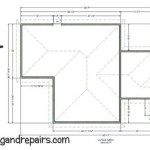Apartment Therapy: Mastering Indoor Houseplants
Cultivating indoor houseplants bridges the gap between the built environment and the natural world. Beyond their aesthetic appeal, houseplants contribute to improved air quality, reduced stress levels, and an enhanced sense of well-being. Successful indoor plant cultivation, however, requires a thoughtful approach that considers factors such as light, water, humidity, and pest control.
Choosing the right plant is paramount. Individual environments present unique conditions, and selecting plants that are well-suited to those conditions is key to long-term success. This entails understanding the amount and intensity of light available, the average humidity level, and the consistency with which watering can be maintained. Ignoring these factors will almost invariably lead to plant stress and potential failure.
Understanding Light Requirements
Light is the primary driver of photosynthesis, the process by which plants convert light energy into chemical energy for growth. Different plant species have different light requirements, categorized broadly as low light, indirect light, and direct light. Low-light plants can tolerate shaded conditions and are suitable for areas with minimal natural light. Examples include snake plants ( *Sansevieria trifasciata*), ZZ plants ( *Zamioculcas zamiifolia*), and cast iron plants ( *Aspidistra elatior*). Indirect light plants thrive in bright, filtered light, such as near an east-facing window or a few feet away from a south-facing window. Popular choices include peace lilies (*Spathiphyllum*), pothos (*Epipremnum aureum*), and philodendrons (*Philodendron*). Direct light plants require several hours of direct sunlight daily, typically found near a south-facing window. Succulents like cacti (*Cactaceae*) and aloe (*Aloe vera*) are examples of plants that thrive in direct sunlight.
Assessing the light available is crucial before purchasing a plant. One can use a light meter for accurate measurements, but a simple observation can also be helpful. Note the direction of the window, the time of day when sunlight enters the room, and the degree of shading from trees or buildings outside. If a plant is not receiving enough light, it may exhibit signs such as leggy growth (long, stretched stems), pale leaves, or a lack of flowering.
Supplemental lighting can compensate for insufficient natural light. Grow lights, available in various forms such as LED and fluorescent, provide the necessary light spectrum for plant growth. These lights are particularly useful during winter months when natural light is limited. When using grow lights, it is important to consider the light intensity and duration of exposure, adjusting them based on the plant's specific needs.
Watering Techniques and Soil Selection
Watering is a critical aspect of houseplant care, but overwatering is a common mistake. The frequency and amount of watering depend on factors such as the plant species, the size of the pot, the type of potting mix, and the environmental conditions. A common guideline is to water when the top inch or two of soil feels dry to the touch. However, this rule is not universally applicable, as some plants prefer to dry out more thoroughly between waterings, while others prefer consistently moist soil.
Different watering methods can be employed. Top watering, where water is poured directly onto the soil, is the most common method. Bottom watering, where the pot is placed in a tray of water allowing the soil to absorb moisture from below, can be beneficial for plants that are prone to fungal diseases. Always use room-temperature water to avoid shocking the plant's roots. Drain excess water from the saucer beneath the pot to prevent root rot. Root rot is a condition where the roots decay due to prolonged exposure to overly saturated soil.
The choice of potting mix significantly impacts drainage and aeration. A well-draining potting mix allows excess water to drain away quickly, preventing waterlogged soil. Common ingredients in potting mixes include peat moss, perlite, vermiculite, and compost. Peat moss retains moisture, while perlite and vermiculite improve drainage and aeration. For succulents and cacti, a specialized potting mix containing sand and gravel is recommended to promote excellent drainage. Avoid using garden soil in pots, as it tends to compact and does not provide adequate drainage.
It is important to monitor the plant's response to watering practices. Yellowing leaves, wilting, and stunted growth can indicate either overwatering or underwatering. Adjust the watering schedule accordingly. Consider using a moisture meter to accurately assess soil moisture levels, especially for larger pots where it can be difficult to gauge dryness by touch.
Humidity, Fertilization, and Pest Control
Humidity plays a crucial role in the health of many houseplants, particularly those native to tropical regions. Insufficient humidity can lead to dry leaf tips, stunted growth, and increased susceptibility to pests. Several methods can be used to increase humidity around plants. Grouping plants together creates a microclimate with higher humidity. Placing plants on a tray filled with pebbles and water allows evaporation to increase humidity. Misting plants regularly can provide a temporary boost in humidity, but this method is less effective in the long term. A humidifier is the most effective way to maintain consistent humidity levels, especially during dry winter months.
Fertilization provides plants with essential nutrients that may be lacking in the potting mix. Plants require macronutrients such as nitrogen, phosphorus, and potassium, as well as micronutrients such as iron, manganese, and zinc. Use a balanced fertilizer diluted to the recommended concentration. Fertilize plants during the growing season (spring and summer), and reduce or eliminate fertilization during the dormant season (fall and winter). Over-fertilization can cause salt buildup in the soil, which can damage the plant. Symptoms of over-fertilization include brown leaf tips and edges. Flush the soil with water to remove excess salts if over-fertilization is suspected.
Pest infestations can be a common problem with indoor houseplants. Common pests include spider mites, aphids, mealybugs, and scale. Inspect plants regularly for signs of pests, such as webbing, sticky residue, or visible insects. Isolate infested plants to prevent the spread of pests to other plants. Various methods can be used to control pests. Insecticidal soap and neem oil are effective organic treatments. Horticultural oil can also be used to suffocate pests. For severe infestations, chemical insecticides may be necessary, but use them with caution and follow the instructions carefully. Prevention is key to pest control. Maintain good air circulation, avoid overwatering, and regularly wipe down leaves to remove dust and potential pests.
Repotting is also essential for the continued health of houseplants. Over time, plants outgrow their pots, and the potting mix becomes depleted of nutrients. Repot plants into a slightly larger pot when their roots become crowded and start to circle the bottom of the pot. Use fresh potting mix when repotting. Repotting is best done in the spring or early summer, when plants are actively growing.
By attending to the light, water, humidity, and pest control needs of indoor houseplants, one can create a thriving indoor garden that enhances the aesthetic appeal and well-being of the living space.

8 Houseplants That Can Survive Urban Apartments Low Light And Under Watering Apartment Plants House Indoor

How Interior Designers Use Plants To Nail The Latest Home Decor Trends

5 Overlooked Plants That Can Survive In The Almost Dark Indoor Low Light House

Foliage Plants Indoor House Apartment Therapy Best

Apartment Therapy Does A House Tour Homestead Brooklyn

Happier Houseplants How To Keep Indoor Plants Healthy Windowsill Plant Apartment
Related Posts








